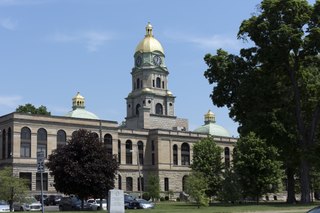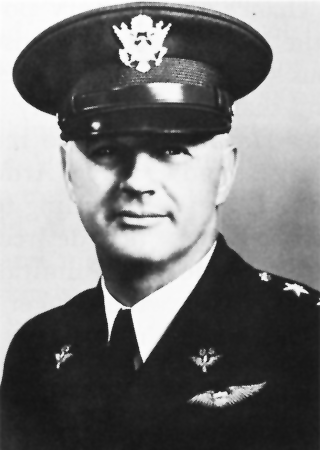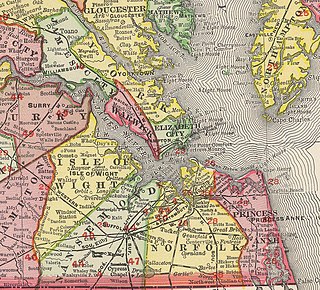Related Research Articles

Newport News Shipbuilding (NNS), a division of Huntington Ingalls Industries, is the sole designer, builder, and refueler of aircraft carriers and one of two providers of submarines for the United States Navy. Founded as the Chesapeake Dry Dock and Construction Co. in 1886, Newport News Shipbuilding has built more than 800 ships, including both naval and commercial ships. Located in the city of Newport News, Virginia, its facilities span more than 550 acres (2.2 km2).

Cabell County is a county located in the U.S. state of West Virginia. As of the 2020 census, the population was 94,350, making it West Virginia's fourth most-populous county. Its county seat is Huntington. The county was organized in 1809 and named for William H. Cabell, the Governor of Virginia from 1805 to 1808. Cabell County is part of the Huntington–Ashland, WV–KY–OH Metropolitan Statistical Area.

Huntington is a city in Cabell and Wayne counties in the U.S. state of West Virginia. The seat of Cabell County, the city is located in SW West Virginia at the confluence of the Ohio and Guyandotte rivers. The population was 46,842 at the 2020 census. According to 2023 census estimates, the city is estimated to have a population of 45,325. Huntington is the second-most populous city in West Virginia. Its metro area, the Huntington–Ashland metropolitan area, is the largest in West Virginia, spanning seven counties across three states and having a population of 368,261 at the 2023 estimate.

Henry Edwards Huntington was an American railroad magnate and collector of art and rare books. Huntington settled in Los Angeles, where he owned the Pacific Electric Railway as well as substantial real estate interests. In addition to being a businessman and art collector, Huntington was a major booster for Los Angeles in the late 19th and early 20th centuries. Many places in California are named after him.

Collis Potter Huntington was an American industrialist and railway magnate. He was one of the Big Four of western railroading who invested in Theodore Judah's idea to build the Central Pacific Railroad as part of the first U.S. transcontinental railroad. Huntington helped lead and develop other major interstate lines, such as the Southern Pacific Railroad and the Chesapeake & Ohio Railway (C&O), which he was recruited to help complete. The C&O, completed in 1873, fulfilled a long-held dream of Virginians of a rail link from the James River at Richmond to the Ohio River Valley. The new railroad facilities adjacent to the river there resulted in expansion of the former small town of Guyandotte, West Virginia into part of a new city which was named Huntington in his honor.

Delos Carleton Emmons was a lieutenant general in the United States Army. He was the military governor of Hawaii in the aftermath of the Attack on Pearl Harbor and administered the replacement of normal U.S. banknotes with special war-emergency US banknotes in case the islands were invaded. He is credited with preventing the mass evacuation of Japanese-Americans from Hawaii, which many have called a shameful episode of racism and jingoism that was felt hardest on the mainland.

Warwick County was a county in Southeast Virginia that was created from Warwick River Shire, one of eight created in the Virginia Colony in 1634. It became the City of Newport News on July 16, 1952. Located on the Virginia Peninsula on the northern bank of the James River between Hampton Roads and Jamestown, the area consisted primarily of farms and small unincorporated villages until the arrival of the Peninsula Extension of the Chesapeake and Ohio Railway in 1881 and development led by industrialist Collis P. Huntington.

Williams Carter Wickham was a Virginia lawyer and politician. A plantation owner who served in both houses of the Virginia General Assembly, Wickham also became a delegate to the Virginia Secession Convention of 1861, where he voted against secession, but after fellow delegates and voters approved secession, he joined the Confederate States Army and rose to the rank of cavalry general, then became a Confederate States Congressman near the end of the American Civil War. Later, Wickham became a Republican and helped rebuild Virginia's infrastructure after gaining control of the heavily damaged Virginia Central Railroad, which he repaired and helped merge into the Chesapeake and Ohio Railway company. Cooperating with financier Collis Huntington, Wickham developed coal resources and the Newport News Shipyard. He was also again elected to the Virginia Senate. His son Henry T. Wickham also became a lawyer and would work with his father and eventually twice become the speaker pro tempore of the Virginia Senate.
Collis P. Huntington High School, commonly referred to as just Huntington High School was a black high school located in the East End section of Newport News, Virginia, US, during the era of racial segregation. After desegregation, it became an integrated intermediate school, and in 1981 was converted to a middle school. The school was named after the shipping and railroad pioneer, Collis P. Huntington, who founded the local shipyards, the Newport News Shipbuilding & Dry Dock Company, at one time the largest shipbuilding concern in the world.

Williamsburg Transportation Center is an intermodal transit station in Williamsburg, Virginia. Operated by the Williamsburg Area Transit Authority, it also serves Amtrak's Northeast Regional train as well as Greyhound Lines and Hampton Roads Transit intercity buses. The transportation center was formerly a Chesapeake and Ohio Railway (C&O) passenger station.

Arabella Duval Huntington was an American philanthropist and once known as the richest woman in the country as a result of inheritances she received upon the deaths of her husbands. She was the force behind the art collection that is housed at the Huntington Library in California.

Newport News has a long history dating back to the days of Jamestown, Virginia. The area which is now the city of Newport News has existed under different names and forms including Elizabeth Cittie, Warwick River Shire, Warwick County, Virginia, Warwick City, and the current independent city of Newport News.

Huntington is the surname of three prominent families from the United States of America. The first was active in the eastern region; the second played an important role in the early Latter Day Saint movement, and pioneered and founded the State of Utah with Brigham Young; the third was active on both coasts and the regions linking them. All three lines descend from Simon Huntington and his wife, Margaret Baret Huntington, who immigrated to America from Norwich, England, in 1633.
Guyandotte is a historic neighborhood in the city of Huntington, West Virginia, that previously existed as a separate town before annexation was completed by the latter. The neighborhood is home to many historic properties, and was first settled by natives of France at the end of the eighteenth century. Guyandotte was already a thriving town when the state of West Virginia was formed from part of Virginia. Located at the confluence of the Guyandotte River and the Ohio River, it was already a regional trade center with several industries of its own when the Chesapeake and Ohio Railway (C&O) reached its western terminus nearby just across the Guyandotte River in 1873. This event was soon followed by the formation and quick development of the present city of Huntington which was named in honor of the C&O Railway's founder and then principal owner Collis P. Huntington.

The West Virginia Colored Children's Home was a historic school, orphanage, and sanatorium building located near Huntington, Cabell County, West Virginia. It was the state's first social institution exclusively serving the needs of African American residents. The main structure, built in 1922–1923, was a three-story red brick building in the Classical Revival style. That building, located at 3353 U.S. Route 60, Huntington, West Virginia, was the last of a series of buildings that were constructed on the site. It was also known as the West Virginia Colored Orphans Home, Colored Orphan Home and Industrial School, the West Virginia Home for Aged and Infirm Colored Men and Women, and University Heights Apartments. It was listed on the National Register of Historic Places in 1997 but was demolished in 2011.
The following is a timeline of the history of the city of Huntington, West Virginia, USA.
Alva Dayne Kenamond was an American university professor, administrator, and college football coach from West Virginia. He served as the dean of Shepherd University from 1924 to 1928, and the head football coach at West Liberty State Normal School (1906–1912) and Shepherd University (1920). Kenamond also served as a West Virginia Court of Claims judge from 1950 to 1954.

The 2024 West Virginia gubernatorial election will be held on November 5, 2024, to elect the governor of West Virginia, concurrently with the 2024 U.S. presidential election, as well as elections to the United States Senate and elections to the United States House of Representatives and various state and local elections. Republican state attorney general Patrick Morrisey and Democratic Huntington mayor Steve Williams are seeking their first term in office. Incumbent Republican Jim Justice is term-limited and cannot seek re-election to a third consecutive term in office; he is instead running for the U.S. Senate. First elected in 2016 as a Democrat by 6.8 percentage points, Justice switched parties in August 2017 and won re-election in 2020 as a Republican by 33.3 percentage points. Primary elections took place on May 14, 2024.
Spring Hill Cemetery is a historic cemetery in Huntington, West Virginia. Established in 1874, Spring Hill Cemetery's oldest grave is dated 1838, with the first official burial being 1873.
References
- ↑ Huffstutler, Barry. "Delos W. Emmons". Cabell County WV Doors to the Past. Retrieved October 16, 2024.
- ↑ "Emmons Apartments, Huntington, W. Va., ca. 1912". C. Clifford Caverlee Collection, 1895-1981. Marshall University . Retrieved October 16, 2024.
- ↑ "Emmons Apartments, Huntington, W. Va". West Virginia History OnView. West Virginia University. Retrieved October 16, 2024.
- ↑ "Lost Huntington: The Emmons Apartments". The Herald-Dispatch . October 11, 2016 [March 10, 2014]. Retrieved October 16, 2024.